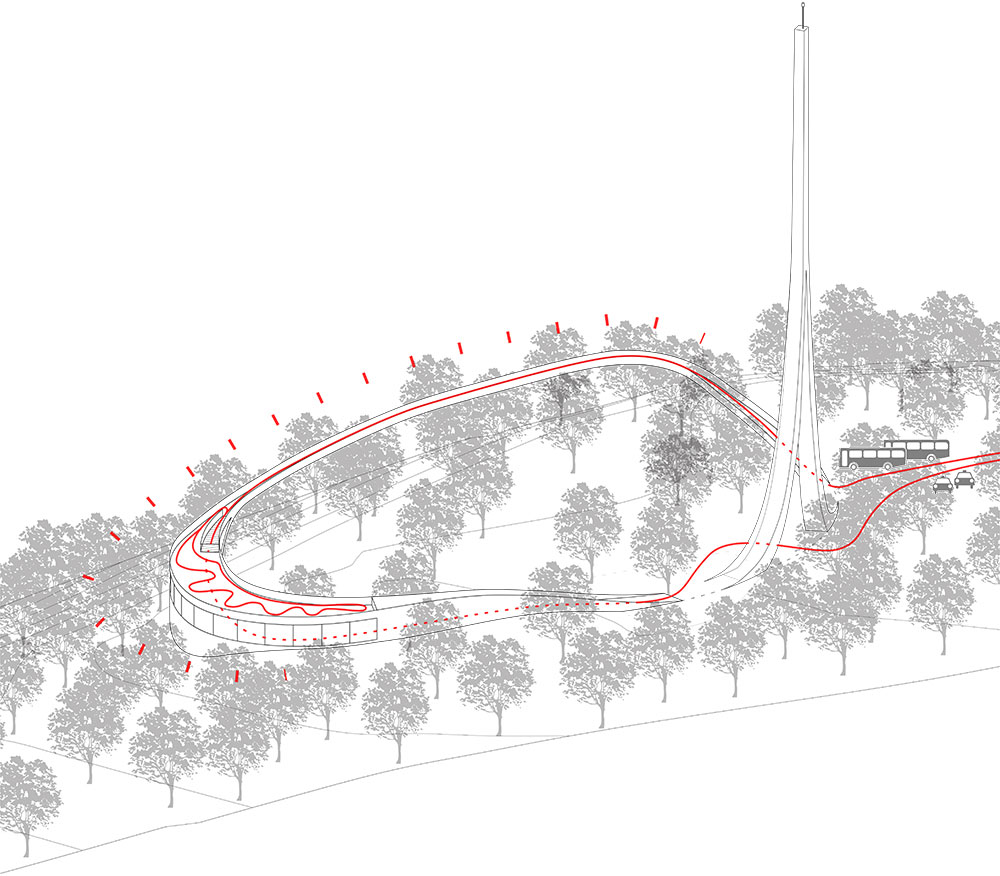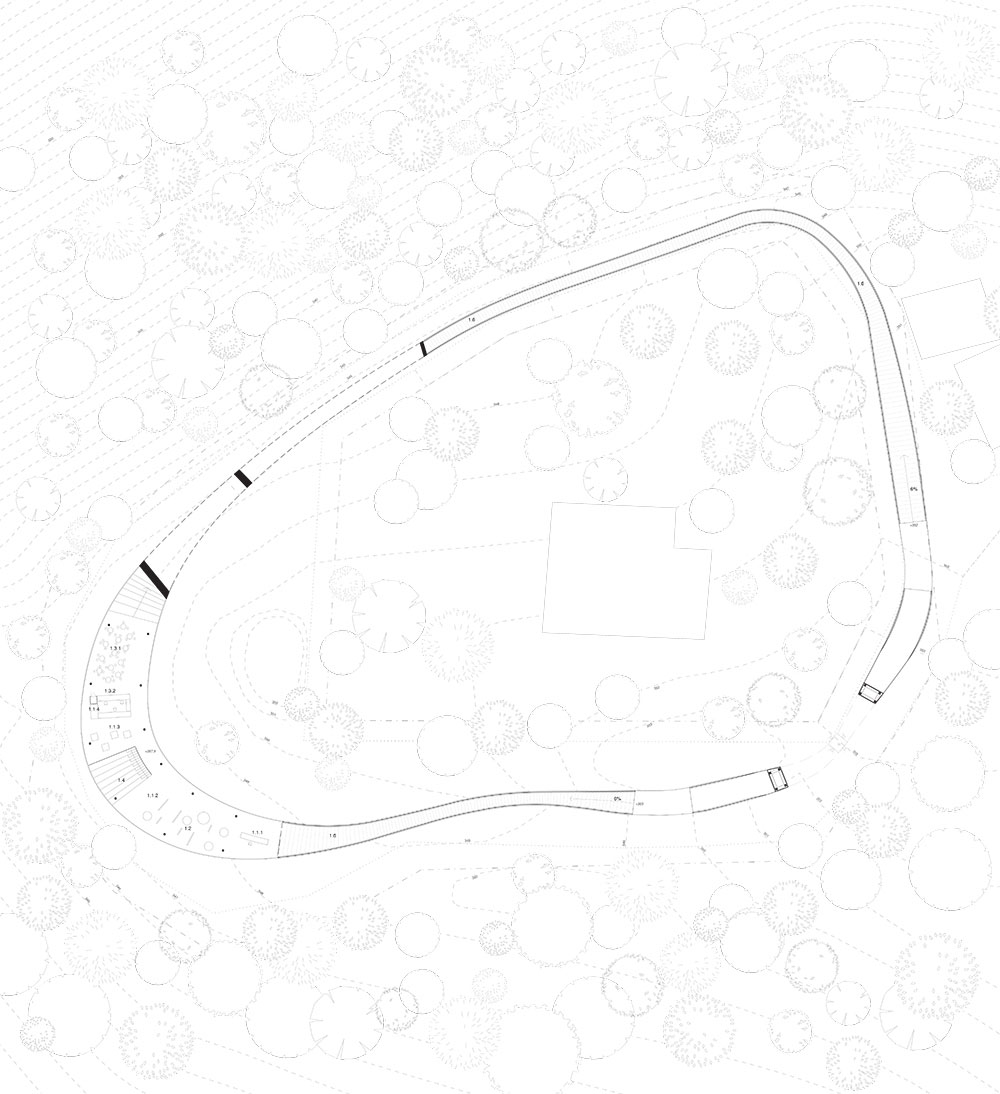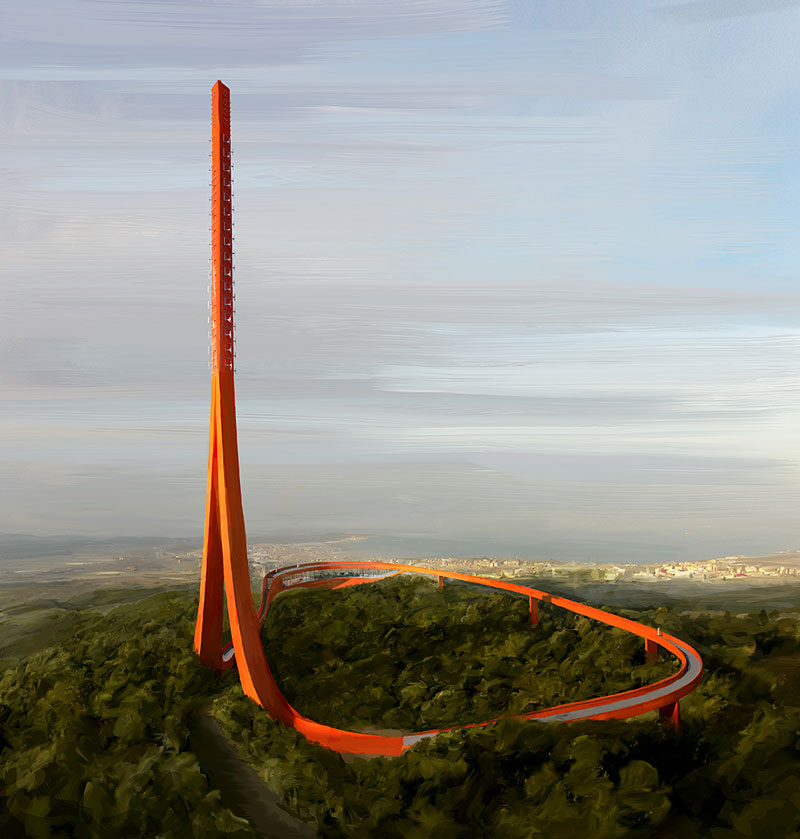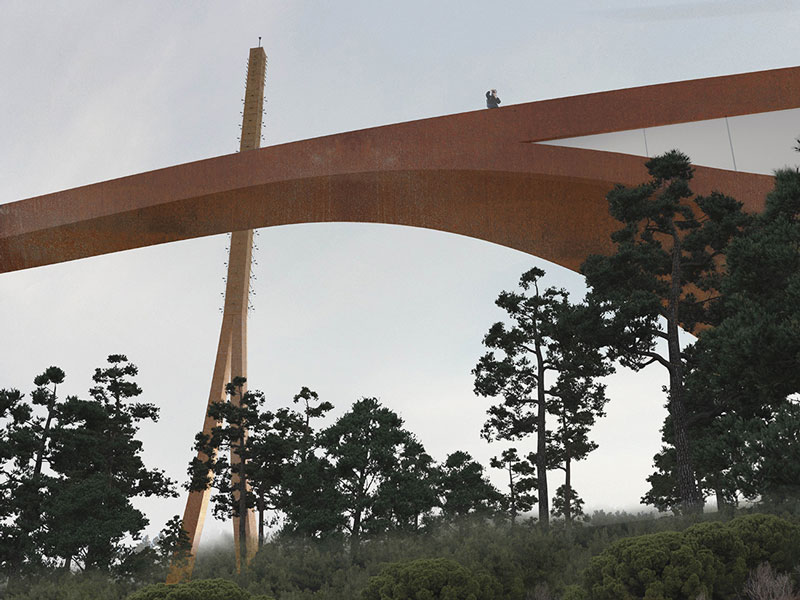- Share
- Like
- Tweet
- Digg
- Tumblr
- VKontakte
- Love This
- Odnoklassniki
- Meneame
- Blogger
- Amazon
- Yahoo Mail
- Gmail
- AOL
- Newsvine
- HackerNews
- Evernote
- MySpace
- Mail.ru
- Viadeo
- Line
- Comments
- SMS
- Viber
- Telegram
- Subscribe
- Skype
- Facebook Messenger
- Kakao
- LiveJournal
- Yammer
- Edgar
- Fintel
- Instapaper
- Copy Link
Internationally acclaimed architecture firms IND [Inter.National.Design] and Powerhouse Company in collaboration with ABT have been announced as the winners of the Çanakkale Antenna Tower International Competition. The design won against an impressive shortlist of internationally renowned architecture firms. The 100-meter tall structure was designed as an Observation and Broadcast Tower for the historic city of Çanakkale, in western Turkey.
The competition brief stated that “competitors are strongly recommended to consider the technological requirements of the broadcasting tower and recreational potentials of a public entity with equal emphasis.”
From the architects:
Once complete, the forested hilltop site will be transformed into a public destination, offering exhibition spaces, recreational facilities and observation decks, in addition to an “iconic antenna tower.”
The design of the new Çanakkale Antenna Tower resolves these paradoxes by uniting all the different functions and spatial requirement into one spatial gesture. A path that loops around the site creates a stunning close-up experience of the forest and offers panoramic views in all directions. It merges into the visitors center that soars over the trees offering breathtaking views over the city and the forest, before returning to the top of the hill, where it shoots off into the sky.
The path is detached in height from the ground, liberating the space on the hilltop and allowing the forest to complete itself into a continuous and uninterrupted landscape. Meanwhile, by placing the path at the external site boundaries, a generous garden is liberated into the interior of the area.
At the brink of the 21st century we are entering a new chapter of modernization. Pure functionality is not enough anymore. Comfort and emotional experience have become more dominant drivers for quality than for technical endeavor. We also have become more aware of the problematic consequences of our hunger for non-renewable resources.

Drawing © Powerhouse Company & IND
The 21st century offers us the chance to rethink the integration of technology and nature into new experiences and identities. The Çanakkale Antenna project offers us a number of interesting paradoxes: how do we enhance the experience of nature with the addition of technology? How do we create a visitors’ experience using the appealing and spectacular heights of the antenna tower, while protecting the visitors from the hazards of the transmitters’ radiations? How do we design an icon that gathers all the qualities of the site and experience them into a comprehensive whole? And how do we integrate the unique local qualities of Çanakkale and the universal symbol of a totem into an attractive experience?

Drawing © Powerhouse Company & IND
The design clearly separates the visitors center from the antenna tower. In this way, it eliminates any radiation hazard for the visitors and the workers at the visitors center. At the same time, people can enjoy the amazing feeling of rising up through the tree tops and soaring over the trees into a platform of 360 degrees views, including seeing the antenna as part of the landscape. The antenna tower thus remains very simple and clean, while being very adaptable for future changes in technology. By keeping the technical rooms close to the tower and the road, the functionality of the antenna tower is uncompromised by the visitors center.

Drawing © Powerhouse Company & IND
The antenna tower is formed by joining the two vertical paths, creating a gracious gateway under which the visitors enter the premises. This gesture creates a strong visual identity; an iconic appearance from afar that is transformed into an elaborate scenic experience when up close. Its architecture aims for technological functionality that maximizes through its gestures the reading of the inherent diverse landscape features.

Drawing © Powerhouse Company & IND

Drawing © Powerhouse Company & IND
About IND [Inter.National.Design]
Arman Akdogan (1973, Turkey) and Felix Madrazo (1972, Mexico) founded IND in 2007. Based in Rotterdam, The Netherlands, the office works on various international commissions that range rom architecture to urban planning and research.
About Powerhouse Company
Charles Bessard (1970, France) and Nanne de Ru (1976, The Netherlands) foundedPowerhouse Company in 2005. Powerhouse Company has offices in Rotterdam, the Netherlands, and Copenhagen, Denmark and works on various international commissions that range from furniture design to architecture, planning and research.
About ABT
ABT, as an independent consulting firm, provides added value to the built environment. This applies to buildings as well as infrastructure, new development and reuse. Based on their all-round engineering and process knowledge, ABT explores the boundaries of the possible together with their clients. ABT is a multi-disciplinary firm that focuses on the structural engineering, civil engineering, architectural engineering, building physics and installation engineering knowledge domains. Han Krijgsman is a senior adviser at ABT.
Facts:
Location: Çanakkale, Turkey
Client: Province of Çanakkale
Design: Arman Akdoğan, Felix Madrazo, Charles Bessard and Nanne de Ru
Team: Alejandro Gonzalez Perez, Stijn Kemper, Albert T. Richters, Onur Can Tepe, Bibiana Paez, Bruno Barbosa, Senad Gvozden, Martin Frank Petersen, Donna van Milligen Bielke, Paul Rikken, Joanna Kułaczkowska
Structural Engineering: ABT, Han Krijgsman, Jouke Pieter Lutgendorf
Antenna Engineering: Hasan Yeşilova, Nizamettin Çetinyılmaz
Aerial visualisation: MIR
*All images and information courtesy of Powerhouse Company.




